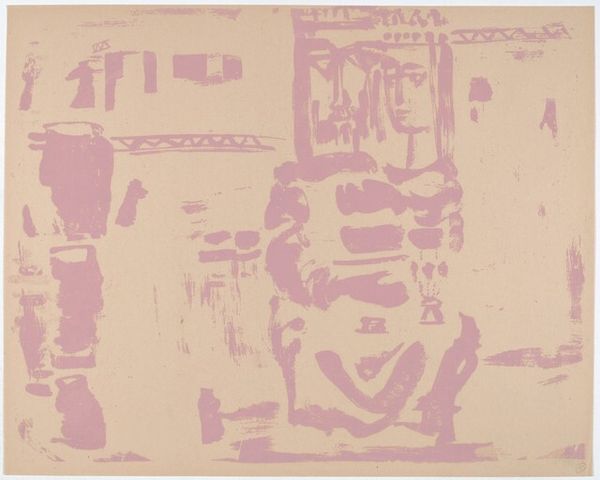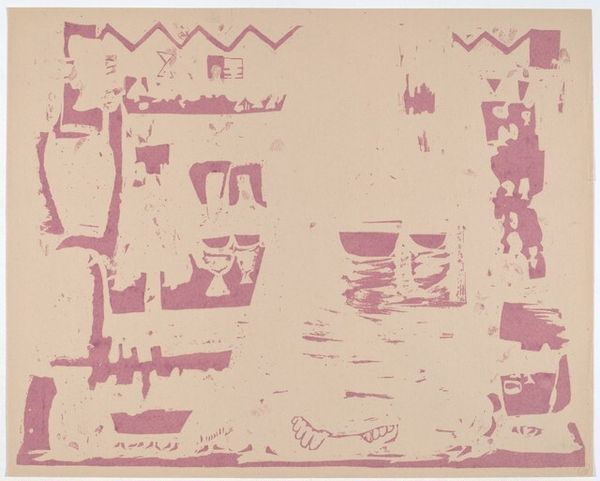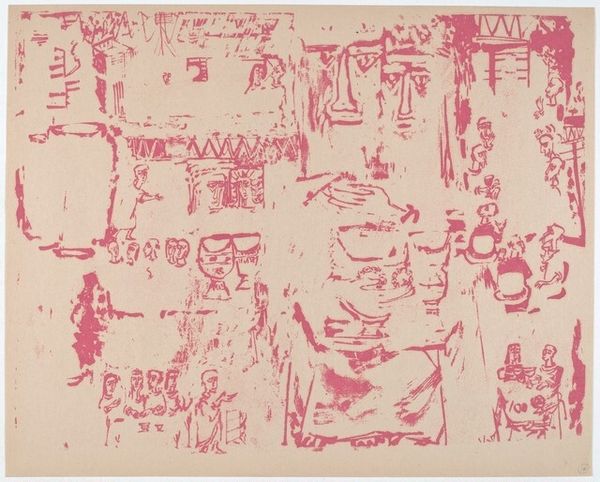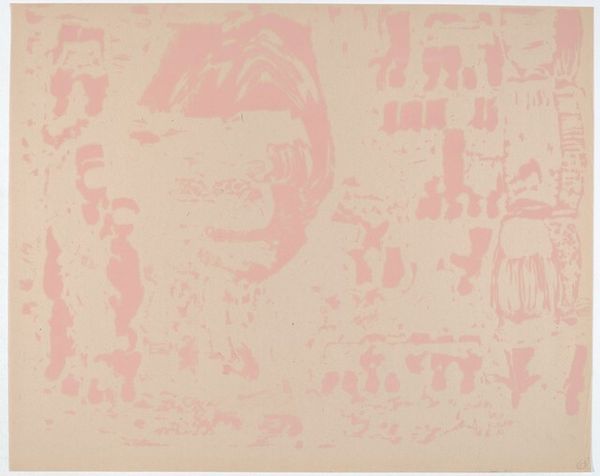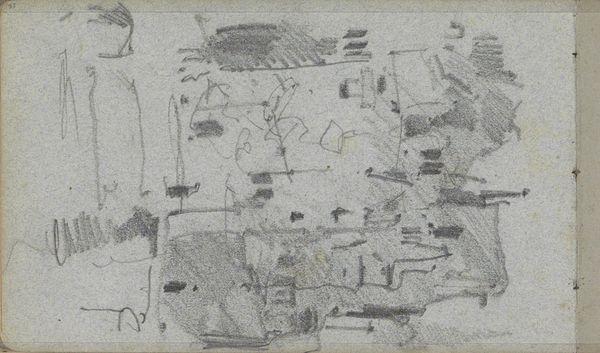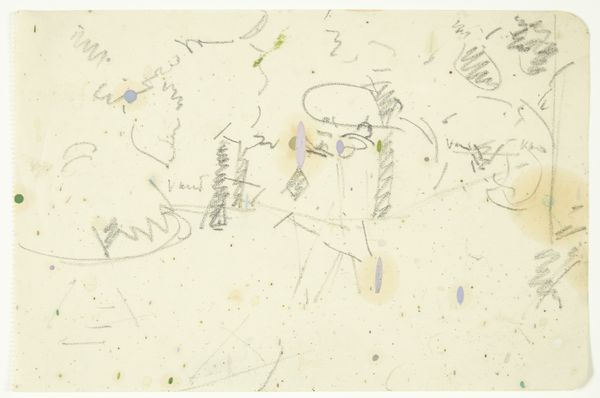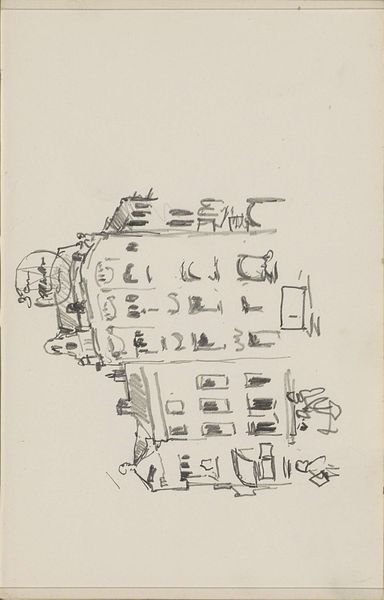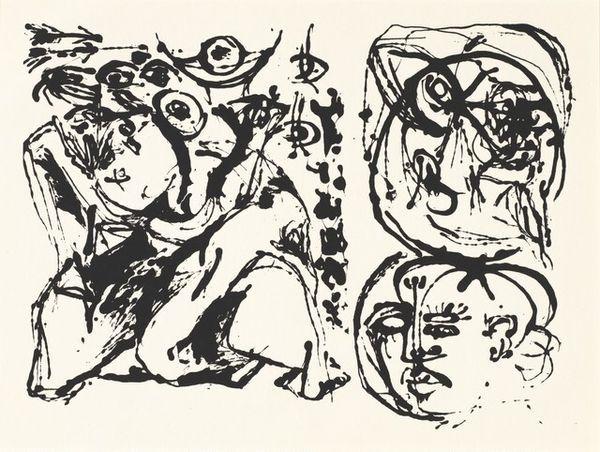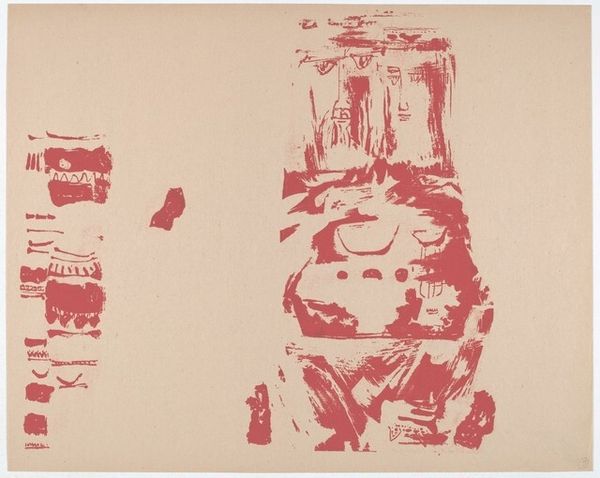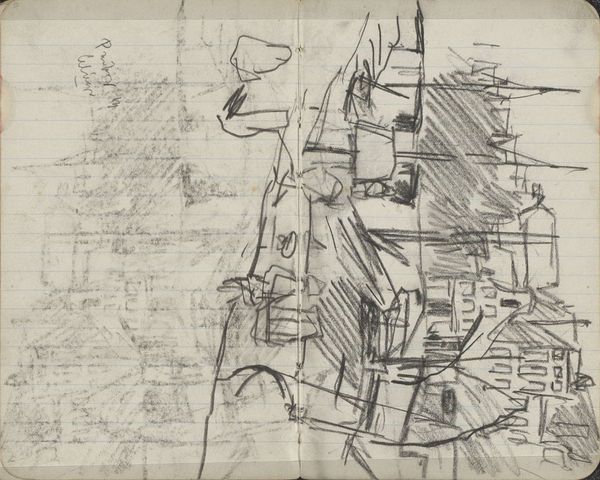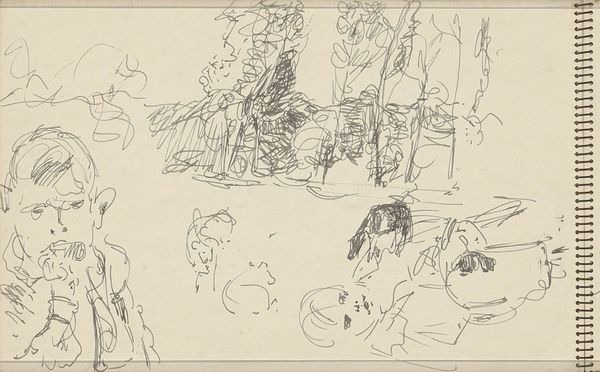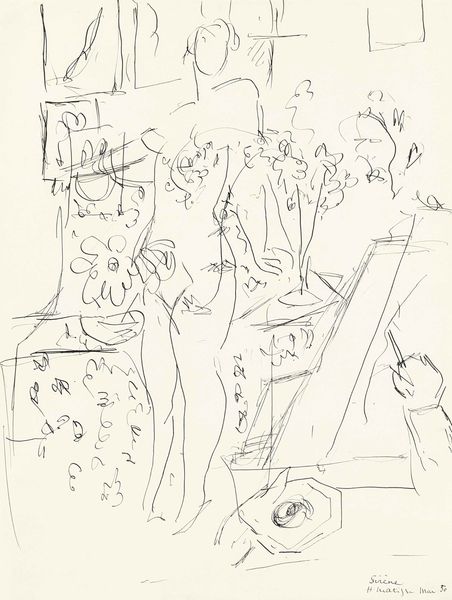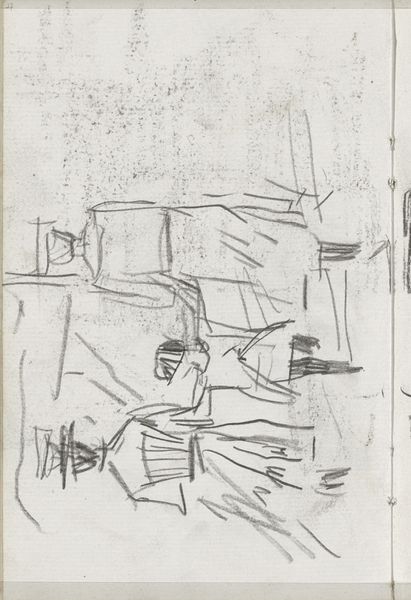
print, linocut, ink
#
abstract-expressionism
#
narrative-art
# print
#
pen illustration
#
linocut
#
figuration
#
ink
Copyright: National Gallery of Art: CC0 1.0
Curator: What a captivating linocut! Corita Kent's "The Beginning of Miracles: IX" from 1953. It's printed in a singular shade of purple ink. The piece seems to be teeming with figures and symbolism. Editor: Indeed, a peculiar purple haze pervades this print! It feels whimsical, almost dreamlike, with its rudimentary lines and asymmetrical layout. What draws my eye is the texture—that palpable sense of the linoleum gouged away. Curator: Kent was a Roman Catholic nun, so naturally her faith informed much of her art. What we're likely viewing is her artistic interpretation of a biblical event or miracle rendered in a contemporary style. Linocuts were favored for their reproducibility. Editor: Reproducibility certainly aligns with the intent. And consider how the deep purple ink—not quite regal, not quite somber—affects the mood. The repetition of goblet-like forms feels particularly striking; perhaps they symbolize holy sacraments? Curator: Perhaps. Contextually, Kent produced this during a tense postwar period. Abstract Expressionism afforded artists a freedom of expression which directly clashed with McCarthyism. In the 50s, art served as protest, sometimes overtly, other times… Editor: ...through suggestion and implication, certainly apparent in Kent's approach here! What appears as simplicity belies sophisticated formal decisions. Look at how she handles positive and negative space, and her bold use of a single hue! It's structurally sound. Curator: We should also recall the era and its conservative artistic preferences. Even semi-abstract figuration challenged established norms, carving out artistic territories beyond government regulation. The church, similarly, provided a complex patronage ecosystem for her art. Editor: I agree entirely; the power lies in its understated complexity. Those angular shapes, recurring motifs, and rhythmic arrangements create such visual harmony, making something both deeply meaningful and immediately appealing. Curator: Her work served a dual function of personal devotion and commentary on social issues prevalent within that period. She adeptly utilized the linocut to reflect profound societal realities. It truly makes you appreciate her boldness. Editor: Absolutely. Examining Kent’s handling of materials and the image’s overall design enriches our comprehension of what makes this image so successful and how Kent so beautifully encapsulates complex content into this seemingly simple print.
Comments
No comments
Be the first to comment and join the conversation on the ultimate creative platform.
